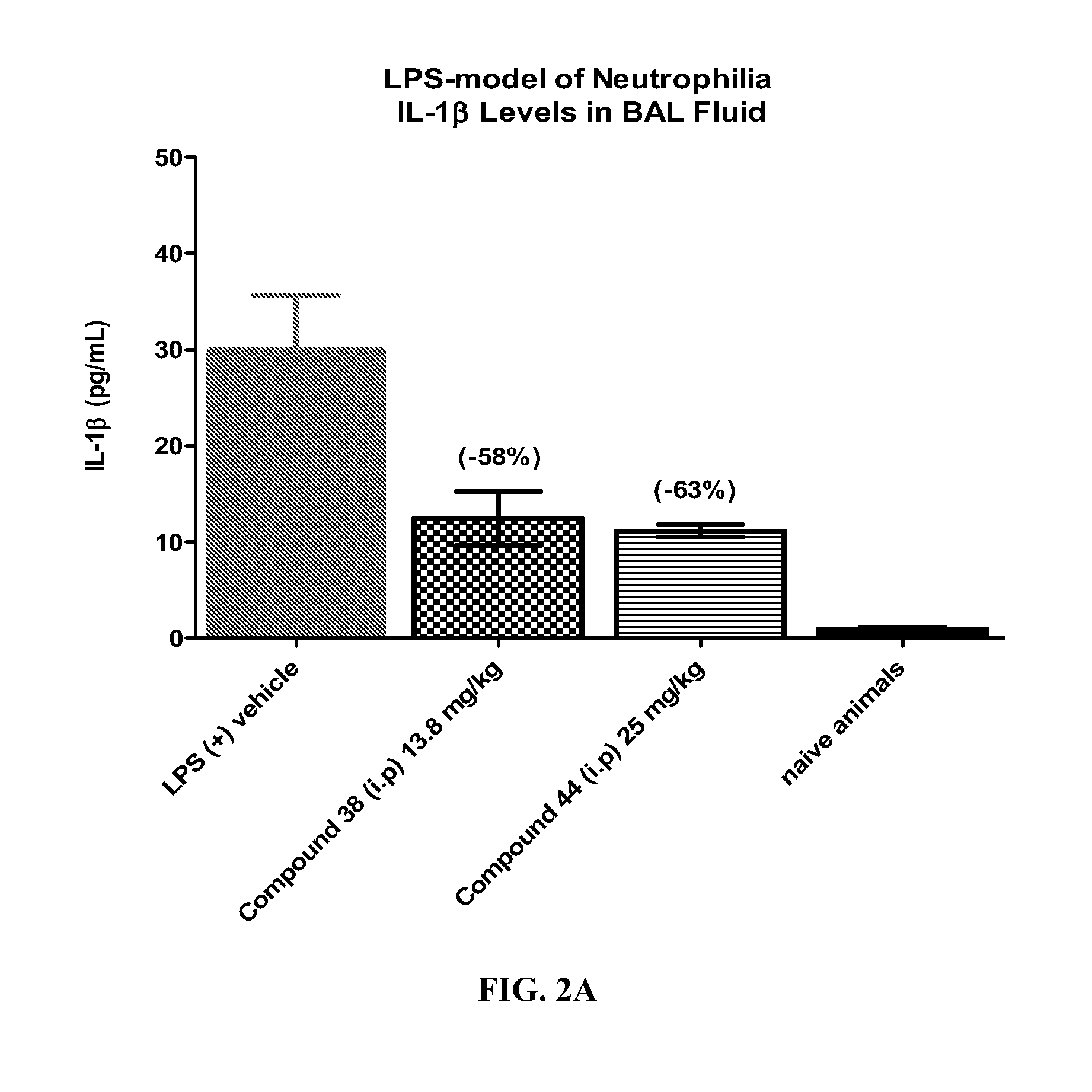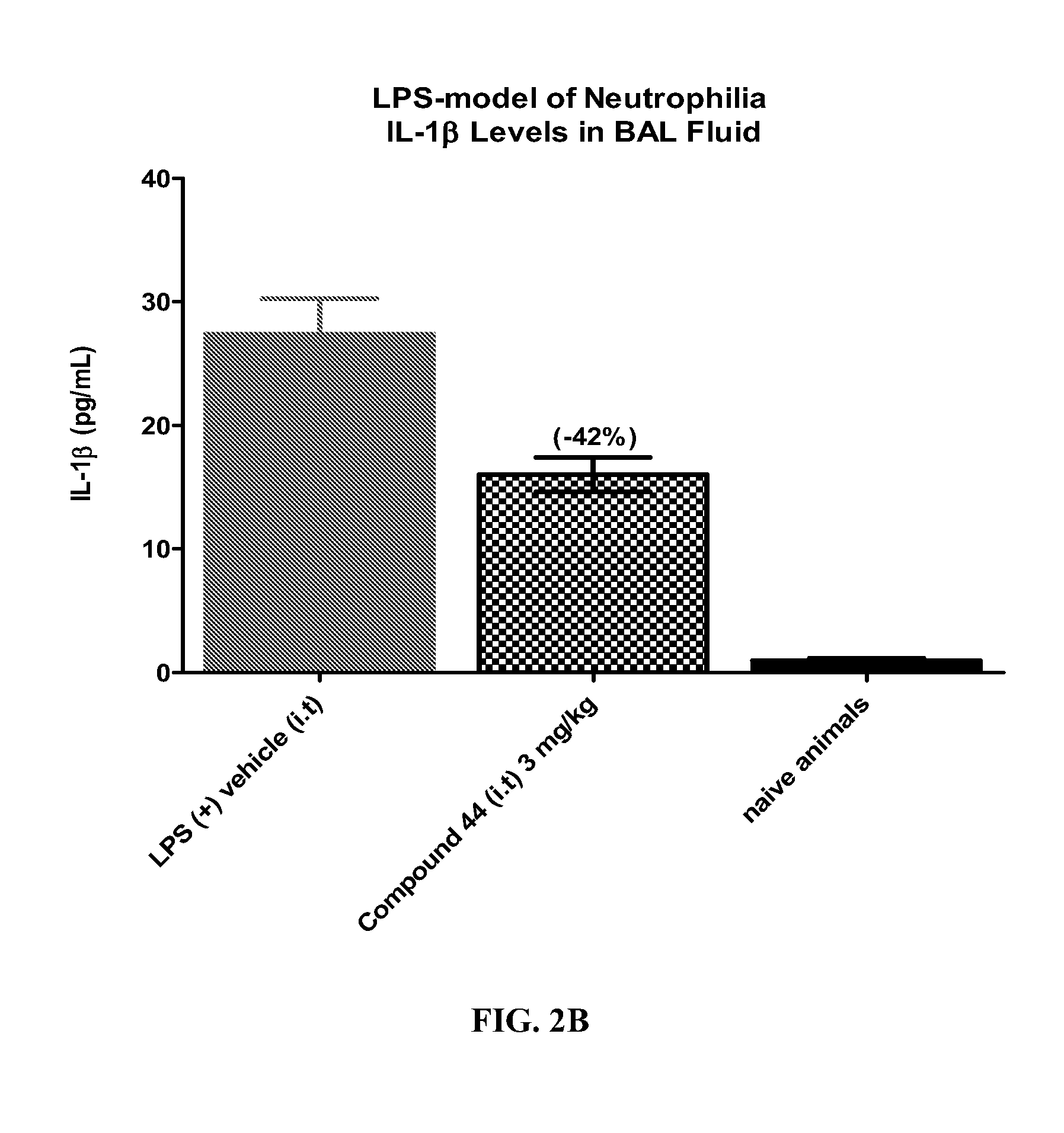These factors serve to further limit
airflow and are not directly addressed by current therapies.
Although corticosteroids are an
effective treatment for most cases of
asthma, the inflammatory cells and mediators in
COPD are not sensitive to treatment with systemic or inhaled corticosteroids making treatment with these agents of limited usefulness in
COPD.
RSV infection in adults also may cause short-term
airway reactivity.
There is no
direct treatment for RSV infection and the respiratory complications it causes.
Bronchodilator therapy in infants with bronchiolitis, largely caused by RSV infection, did not demonstrate benefit in large randomized trials and systematic reviews.
These events lead to cough and progressive shortness of breath.
IPF patients have compromised
lung function and have shown restrictive
lung volumes and capacities.
Thus, the first line of treatment of IPF has not yet been established.
Whereas a variety of different insults may lead to
ARDS, a common pathway probably results in the lung damage and / or failure, leukocyte activation within the lung, along with the release of
oxygen free radicals,
arachidonic acid metabolites, and inflammatory mediators, resulting in an increase in alveolocapillary
membrane permeability.
With the loss of this macromolecular barrier, alveoli are flooded with serum proteins, which impair the function of pulmonary surfactant (Said et al.
This creates hydrostatic forces that further exacerbate the condition (Jefferies et al., J. Appl. Physio. 64: 5620-5628, 1988), leading to alveolar
edema and a concomitant deterioration in
gas exchange and lung compliance.
Unfortunately, positive-pressure mechanical support can create or contribute to
lung injury (ventilator-induced
lung injury, VILI).
Am J Respir Crit Care Med 168:918, 2003), leading to progressive respiratory insufficiency and eventual
respiratory failure.
Defective CFTR results in abnormal
ion transport and airway surface liquid volume with alterations in the
rheology of airway secretions, which become thick and difficult to clear (
Wine J J.
Once infection is established, neutrophils are unable to control the
bacteria, even though there is massive infiltration of these inflammatory cells into the
lung tissue.
This phenomenon may occur when progressive airway damage leads to a loss of cartilaginous support, resulting in an increased reliance on
muscle tone for maintenance of
airway patency.
Muscle relaxation in this setting can cause collapse of such “floppy” airways, leading to increased
airflow obstruction.
The result is permanent abnormal dilatation and destruction of the major bronchi and bronchiole walls.
Recurrent infection is common, which can lead to further scarring, obstruction, and
distortion of the airways, as well as temporary or permanent damage to the lung
parenchyma (Barker, A. F. Clinical manifestations and diagnosis of
bronchiectasis.
Mortality is difficult to estimate given the difficulty in identifying
prevalence and the lack of definitive studies.
Several antibiotic treatment strategies are expensive and require extra equipment and personnel and only target part of the
pathophysiology of the
disease.
(Barker, A. F.) Thus, the treatments for bronchiectasis are limited in their ability to affect key pathophysiologies of the disease.
Low levels of AAT and / or
secretion of defective AAT can lead to an imbalance between antiproteases and their target
serine proteases, leading to
tissue damage by these potent degrading enzymes (Koehlein, T et al.
AAT is mainly produced in the hepatocytes, with the most common inherited AAT defect giving rise to an accumulation of
abnormal protein in these cells, often resulting in
cell damage (Lomas, D A, et al.
In the lung, the alveoli show low levels of functional AAT, often leading to an imbalance between antiprotease and
protease, and consequential tissue destruction.
However, as none of these therapies are particularly effective, there is an unmet medical need for improved drugs for the treatment of AATD induced lung disease.
Each type of allergic rhinitis may cause additional symptoms such as
itching of the
throat and / or eyes, excessive tearing, and
edema around the eyes.
The treatments for rhinosinusitis are costly, exceeding $200 million per year.
This illness is detrimental to both the overall
quality of life and economic welfare of sufferers.
A leading theory suggests that
exposure to allergens induces inflammation in the small channels of the ostiomeatal complex (OMC), which results in mucosal
edema and ultimately impaired mucociliary clearance of the sinus ostia leading to blockage.
This excess
mucus and swelling creates plugs that obstruct the bronchioles which leads to hyperinflation or lung collapse in distal tissues.
Pneumonia is the most common
cause of death from infection in the United States, and costs the healthcare
system over $20 billion.
Pneumonia may cause mild disease, but
severe disease can result in the very young, the elderly, and the chronically ill.
Clinical failure can occur in up to 31% of patients with severe CAP, significantly increasing the risk of complications, days in the hospital, and death.
These failures typically occur during the first 72 hours after admission and are most often related to
sepsis.
Clinical failure can also result from extrapulmonary events associated with the
inflammatory response and increased proinflammatory cytokines.
Abnormal beating or immotility of cilia leads to defective mucociliary clearance of airway secretions.
Lung damage ultimately advances to the stage of irreversible bronchiectasis, leading to progressive air and mucus
trapping and ultimate
respiratory failure (Bush A, Chodhari R, Collins N, et al.
There are currently no approved therapies for the treatment of PCD.
The histopathologic features of OB suggest that injury and inflammation of epithelial cells and subepithelial structures of small airways lead to excessive fibroproliferation, seemingly due to ineffective epithelial regeneration and
aberrant tissue repair.
BOOP usually responds well to
corticosteroid treatment, however, frequent relapse occurs and new therapeutic options are needed to treat BOOP.
However, despite the availability of these therapies approximately 30 percent of patients with RA fail to respond adequately to therapy (Helfgott, S M. Evaluation and medical management of end-stage
rheumatoid arthritis.
While these drugs prove somewhat beneficial, there are numerous side effects such as
vomiting, increased
diarrhea, high
blood pressure and diabetes, bone fractures, mild
kidney inflammation, and stunted growth and can also be used only short-term.
After long term use of corticosteroids, side effects can include
thinning of the bone and
skin, infections, diabetes,
muscle wasting,
rounding of faces, psychiatric disturbances, and destruction of hip joints.
Immune system repressors can be used for longer amounts of time, but because the drugs suppress the
immune system, fatal infection and contraction of other immune diseases is more prevalent.
Surgery often makes daily tasks difficult due to protocolectomy and the requirement of wearing a small bag to collect stools.
Individuals with neuropathic disorders and the resulting debilitating
neuropathic pain have a decreased
quality of life, but agents commonly used to treat other types of pain are usually ineffective (Beniczky S et al.
Despite the availability of these agents, AD continues to be a debilitating disease and new
treatment options are needed.
Furthermore, these treatments do not address the underlying cause of the disease.
It affects 1.5 million people worldwide, and its symptoms generally occur in young adults, therefore its consequences at a personal and socioeconomic level are very severe.
Currently, the pharmaceutical treatment of dry
eye disease is mostly limited to administration of
artificial tears (
saline solution) to temporarily rehydrate the eyes and to reduction of inflammation ((Riento K et al.
However,
artificial tears, the most widely used group of products, often have contraindications and incompatibility with soft contact lenses (Lemp M et al.
Blepharitis disturbs the production of the critical, outer lipid layer of the tear film which causes the entire tear to evaporate, resulting in dry eye.
A reduced tear quantity doesn't properly dilute
bacteria and irritants, nor wash inflammatory products away from the lashes and lid margin, so they accumulate and lead to further inflammation worsening the cycle of disease, with
blepharitis,
meibomian gland dysfunction and dry eye perpetuating each other.
Since lid scrubs and hot compresses are required multiple times daily, long-term compliance to produce positive results can be an issue.
If left untreated, blepharitis can lead to a more serious condition called ulcerative blepharitis accompanied by
eyelid scarring, scarring of the
cornea, and eventually loss of
visual function.
The use of a topical ophthalmic
steroid can be helpful in reducing acute inflammation, however extended use is complicated by severe and numerous side effects.
 Login to View More
Login to View More  Login to View More
Login to View More 


